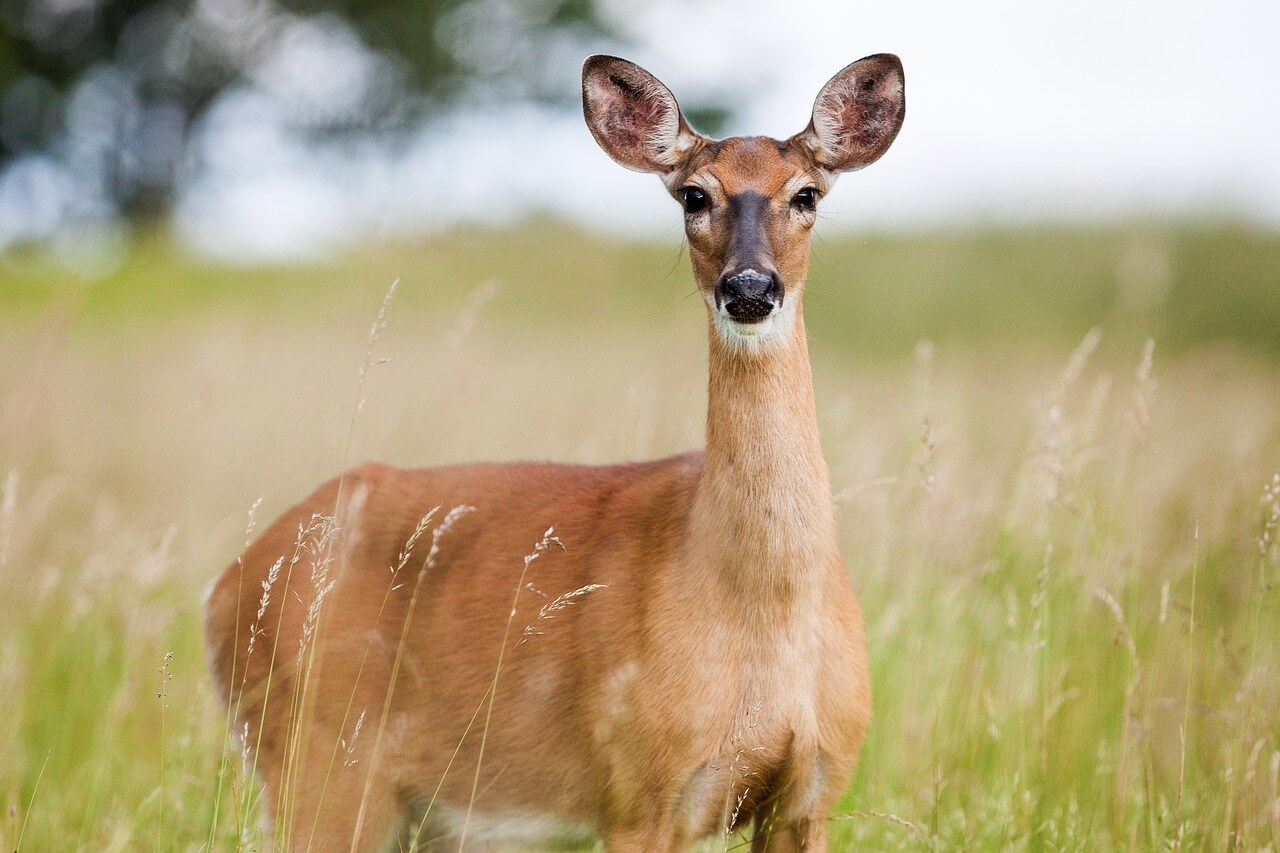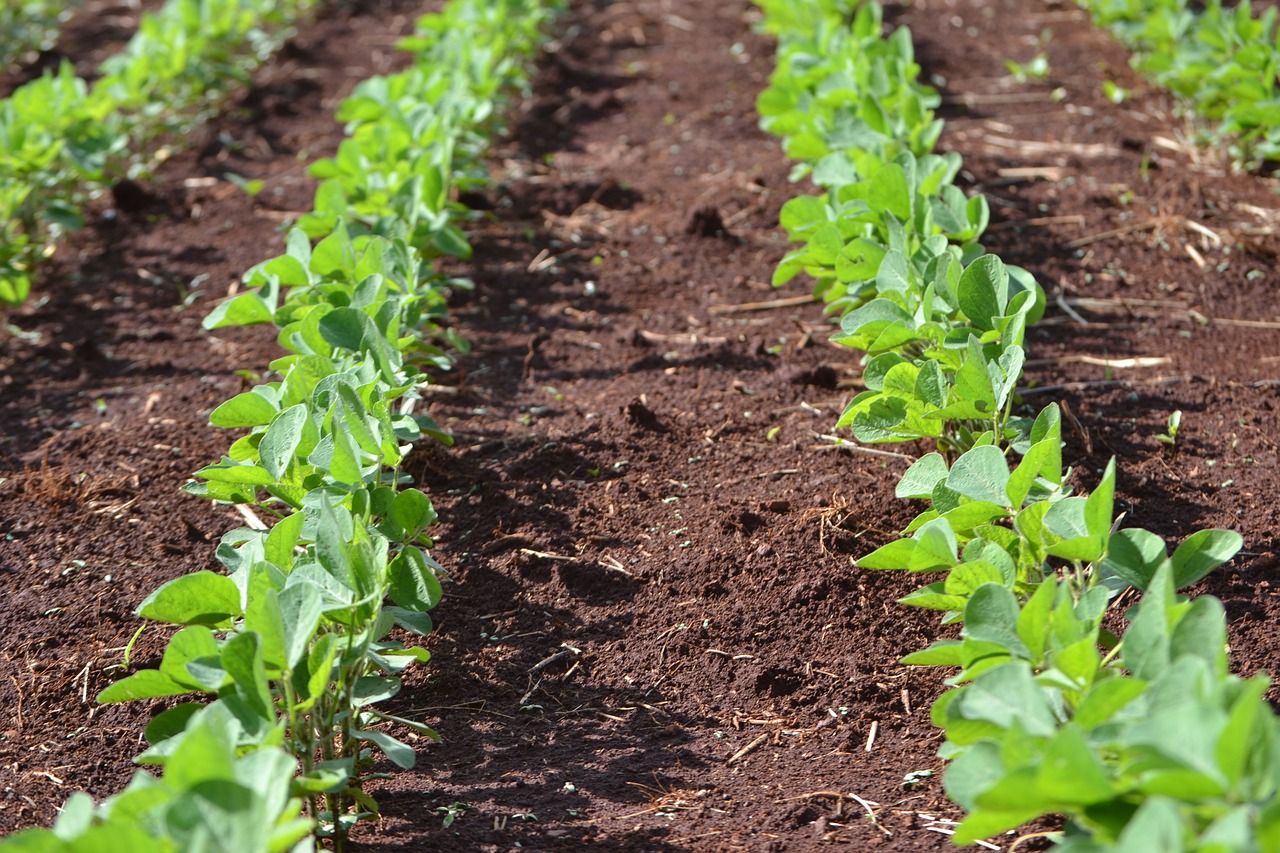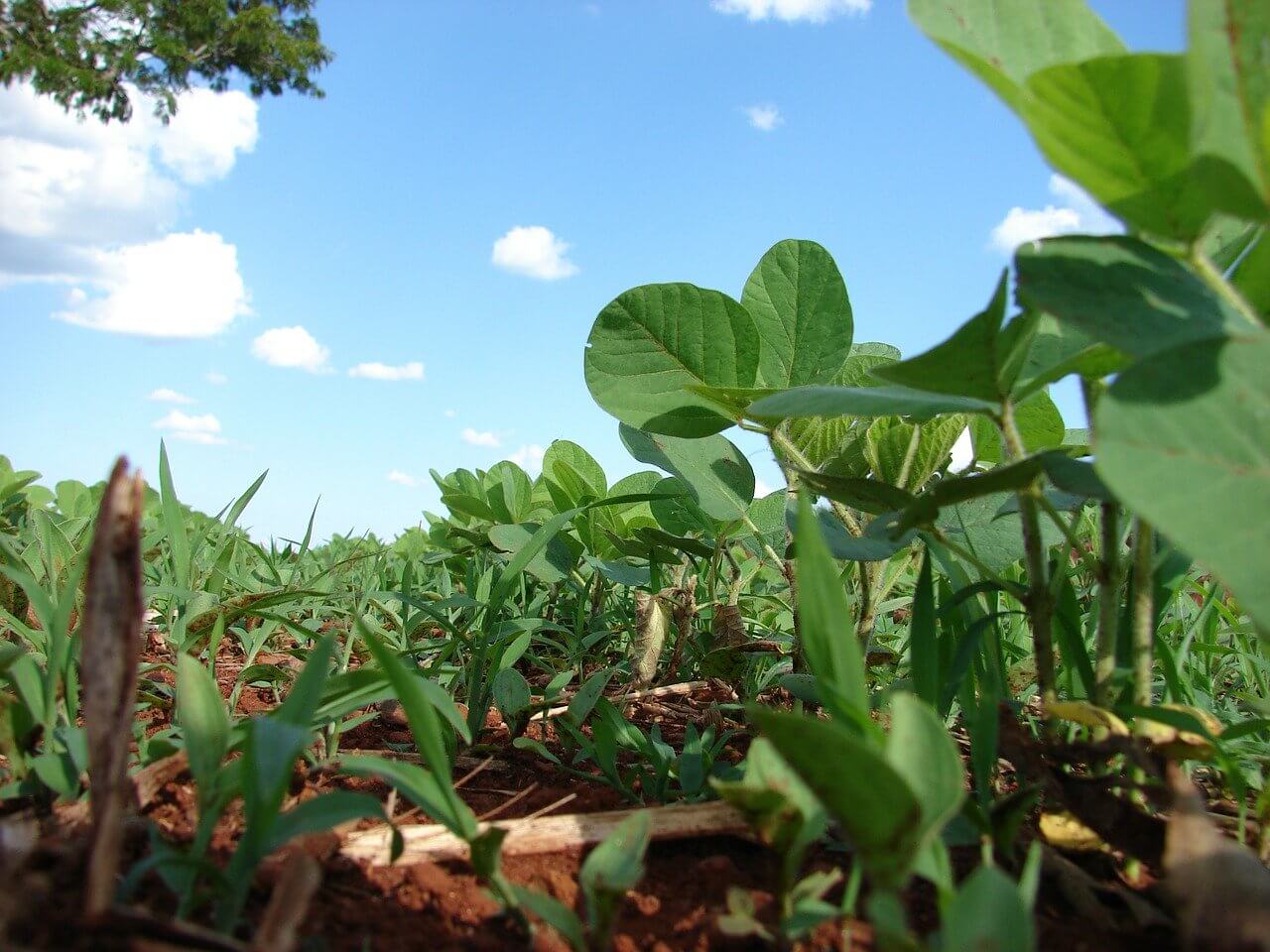To help improve deer populations, it has become a common practice to grow food plots to supplement their regular diet. One popular plant used for this is soybean, as it is an excellent protein source and can be very beneficial. In this article, I will explain exactly how to grow soybeans for deer.
What You'll Learn Today
Why Should You Grow Soybeans for Deer?

Deer love soybeans (Glycine max) and for a good reason. The plants are packed with up to 35% of highly digestible protein and omega-3 oils that help to keep them strong and healthy.
With the right growing conditions, you can produce up to four tons of high-quality forage per acre. In late fall, you’ll get soybeans which are high in carbohydrates and can help to sustain the deer through the rut and winter season.
Conditions Required to Grow Soybeans
Soybeans grow best in warm, moist climates. They are a hardy plant that doesn’t require any special treatment or management.
Part of the legume family, they help to lock nitrogen into the soil, so they are beneficial in building soil fertility that is useful for other crops.
The main requirements to grow soybeans are reasonable soil quality and a temperature range of between 70°F and 90°F that is ideal for both growth and drying of the seed.
Soil temperatures should be 60°F or above before planting the seeds and the minimum temperature should not drop below 50°F.
Soybean Varieties Suitable For Deer

There is an extensive range of varieties available. They fall into two broad groups, either forage plants or grain plants, both of which are valuable for deer.
Most farmers choose the grain plants that produce a high yield of beans on relatively short stalks. But for deer, you want abundant amounts of forage, so it is this type that is usually chosen for growing in deer food plots.
The forage varieties are referred to as climbing soybeans, as they grow tall like a vine. They can be planted with other grains, such as tall sorghum or Egyptian wheat, to provide stalks to climb.
Once grown, deer can use the plot not only to forage in a food-rich environment but also to use for cover.
It’s a good idea to do a little research into the best soybean varieties for growing in your area. You can do this by contacting your local Cooperative Extension Service. They can give you advice and help you select the best varieties for the climate and soil in your area.
Some popular forage varieties include:
- Quail Haven
- Laredo
- Big Fellow RR
- Large Lad RR
- Tyrone
If you live somewhere with only a short warm season, such as in the far North, you might be better off using a shatter-resistant grain. Again the Cooperative Extension Service can advise you.
Size of Food Plots

When deciding how large a plot to grow, a lot will depend on the deer density in your area. A plot of between 3 to 5 acres would be the minimum recommended size as if you grow less than this, the deer will devour the lot as soon as it starts sprouting.
If you have a large number of deer, but only a small plot available, you can defend it until it matures by surrounding it with electric fencing.
Using a dual perimeter electric fence is safest and all the equipment you need can be purchased in most local hardware stores or from farm suppliers. For the best deals, look online.
There are lots of options open to you when using an electric fence setup. You can choose to strip graze the crop at certain times, ensuring you have some remaining for the next stage in the season, or open it all up over a particular period.
When to Plant Soybeans
For best results, aim to plant your soybeans right after the last frost, but not until the soil temperature reaches 60°F. This could be as late as June in the North or as early as April in the South.
Forage varieties tend to take longer to mature than grain ones. For this reason, you may not get a crop of soybeans before the return of winter frosts if you plant your seeds too late in the North.
Choosing your Plot
You’ll want to choose where to plant your soybeans carefully. The plants grow best in well-drained soil that gets full sun, particularly during fall.
The soil should ideally be of good quality and easy to manage.
Because of the way deer are attracted to soybean feed plots, it’s best to grow as large an area as you can, particularly if you have a significant deer population.
Preparing the Seedbed and Planting
To grow soybeans, you’ll need good quality soil that is well-drained and has a pH of 6 to 7. It’s advisable to test soil pH and adjust as necessary with lime.
The seedbed needs to be well prepared. To do this, first remove rocks, branches, weeds, and other debris. Next, break up the soil with a plow or disc harrow. Use a drag harrow or cultipacker to help you get a good surface with a fine texture for seeding.
If you prefer the no-till method, you’ll need to clear the ground and then plant your soybeans a maximum of two inches deep. If you have tilled your soil, seeds can be planted at between an inch and an inch and a half.
Watch the weather forecast and try to sow a day or two before rain. This will help water the seeds in and encourage them to germinate.
If you’re going to broadcast your seed, then you’ll need around 80 lbs per acre unless you’re going to plant with other grains such as Sorghum, Egyptian wheat, or corn. If you do decide to do this, you’ll need to adjust the amount of soybean seed accordingly.
If drilling, you want about 50 lbs per acre, which again will need adjustment if sowing with another crop.
In this video, you can see a plot being prepared from start to finish and the seeds being broadcast by hand.
Once you’ve sown your seeds, cover them and hopefully they’ll start to sprout in around a week.
Seed Inoculation
We need air to survive, and the air we breathe is made up mostly of nitrogen, followed by oxygen, water, carbon dioxide, ozone, and other trace components.
Legumes use rhizobia bacteria to turn atmospheric nitrogen gas into ammonia nitrogen which can be used by the plant.
This happens in a very specialized root system where nodules are formed that provide the plant with all the nitrogen it needs.
Not all soils contain the rhizobial species necessary for this process, so no nodules will form on the roots and the crop will be reliant on the nitrogen available in the soil.
The result of this can be weak growth or plants that are not a healthy dark green color.
By introducing the right rhizobia species, Rhizobium or Bradyrhizobium, this problem can be overcome.
The rhizobia must be added to the seeds just before planting or directly into the seedbed along with the seeds. Then it is more likely the soybean roots will develop the desired nodules.
This process is called legume inoculation, and the product they are inoculated with is called an Inoculum.
If another legume was grown in the field just before the soybeans, then there may already be sufficient rhizobial species to let the soybean roots form nodules, although this isn’t always the case.
Usually, you’ll receive instructions about inoculation with the seeds if you buy them from a reputable supplier.
Should You Plant Soybeans for Deer?

Even though deer love soybeans, there are situations when you shouldn’t plant a food plot of them.
Find out if neighboring farms are planting soybeans, as if the frequency is high in your area, or if a close neighbor is sowing a large plot, it could be that deer won’t be attracted to your smaller one.
If your soil is poor, then you may find your crop of soybean plants is no good, and you’ll have wasted a lot of time, money, and effort for nothing.
In areas where there is a very high deer density, small plots are more likely to get decimated almost as soon as they begin growing. To become properly established, you’ll need to protect them.
Fertilizer
If you want to use fertilizer to feed your soybeans, be sure to use a low nitrogen mix. Follow directions closely to provide the correct amount for the size of your plot.
Frequently Asked Questions

Growing a deer food plot can provide numerous benefits for both hunters and the deer population. Food plots offer a supplemental food source that can improve the overall nutrition and health of deer, especially during periods of low natural forage availability. A deer food plot also attracts deer to specific areas, making hunting more successful and allowing for better wildlife management.
Deer food plots provide additional food sources that may be lacking in the surrounding environment. When you plant a diverse range of forage plants, your food plots can increase biodiversity and support a variety of wildlife species in addition to deer. These plots can enhance the overall habitat quality, providing cover, forage, and important resources for a great deal of wildlife. This ultimately promotes a healthier ecosystem.
Shatter-resistant grain is a type of grain crop that has been bred or developed to have increased resistance to shattering or breaking apart when the seed heads mature. Shattering is the natural process by which grains disperse their seeds, but it can be undesirable for certain agricultural purposes. Shatter-resistant grains are designed to reduce seed loss during harvesting, making them more efficient and easier to collect.
Strip grazing is a rotational grazing technique wherein livestock, such as cattle or sheep, are confined to a specific strip or section of pasture for a short duration before being moved to another strip. This method allows for better utilization of forage and prevents overgrazing in a particular area. Strip grazing can help maintain healthier pastures, improve forage quality, and enhance the sustainability of grazing systems by mimicking the natural grazing patterns of wild herbivores. You can use this method in reverse with deer. Instead of confining them to a specific area, you would keep them out of specific areas in order to allow forage to regenerate.
Rotating soybean deer food plots from one year to the next can be beneficial for several reasons. Crop rotation helps prevent the buildup of pests, diseases, and weeds that may specifically target soybeans, reducing the need for chemical control. It also helps improve soil health and fertility by varying the nutrient demands of different crops. Rotating soybean food plots with other forage options can provide a more diverse food source for deer, supporting their nutritional needs throughout the year and potentially increasing their overall health and population sustainability.
Conclusion
Should you decide to grow soybeans for deer, you can be sure it’s a good choice. It will help to meet the nutritional needs of your deer population from summer through to winter.
With the right conditions, soybeans are easy to grow and require little maintenance.
If you’d like to find out more about soybeans or have other small farm or homestead interests, why not take a look at the rest of the information available on our site.